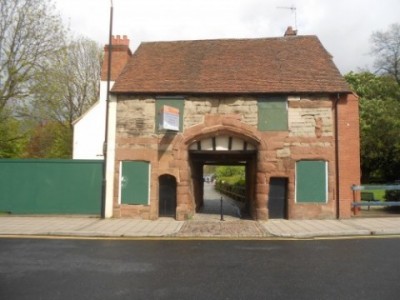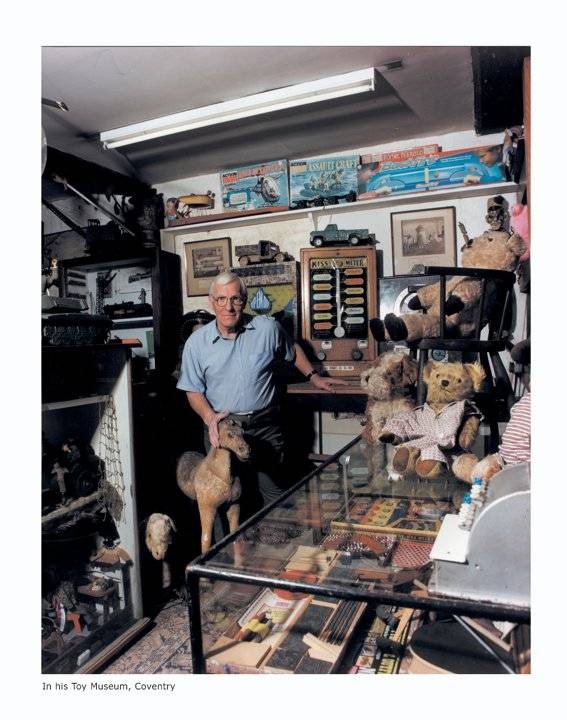Toy Museum

Whitefriars Gatehouse (The Old Toy Museum).
The Society remains concerned about the Old Toy Museum, in Much Park Street. Although this building has been partly refurbished, it remains vacant.
Whitefriars Gate is statutorily listed Grade II* and therefore falls within the top 5% of listed buildings in the country. The gate itself was originally thought to have been all medieval providing controlled access to the Whitefriars Monastery (Carmelite), the remains of which now stand on the east side of the Ring Road. The monastery had another internal gate that was badly damaged in the Blitz, situated in what is now the London Road roundabout. This was the main gatehouse to the monastery with access directly off the road to London. In the 1430s the town wall was constructed along the London Road, blocking the access to the internal gate. It appears the Carmelites acquired a plot of land on Much Park Street to provide alternative access and that they erected a sandstone screen with statue niches to make a grand statement at the beginning of the long diversion to the monastery itself. When John Hales purchased the dissolved monastery in the mid 16th century, he probably had another wall built parallel to the original arch and screen. A room was slung between the two and covered in a steeply pitched roof. This explains why the room on the first floor falls below the arch, the punched-hole nature of the windows and doors on the street elevation, and the lack of solid side walls that would be expected in any medieval gate. (The walls of pre-existing properties must have been ‘borrowed’).
In the 18th and 19th centuries extensions were built on the rear of the neighbouring ancient inn to the north, known as ‘The Rose.’ This property is documented from the 16th century. Much Park Street was badly bombed during the Second World War leaving few of the ancient buildings that lined the street standing. As a consequence of enemy action and postwar clearances, the Whitefiars gate house and the remaining fragment of ‘The Rose’ were left attached and amalgamated into one property. The rear wing may have functioned as part of the inn originally, but it is clear that the upper part was also at one time a workshop. The large multi-light window probably illuminated either watch making or ribbon weaving, important industries in 18th- and 19th-century Coventry. (information courtesy of Coventry City Council).
The building is still owned by the City Council, with a plan to transfer it to the Historic Coventry Trust once resources have been secured to convert it into a productive use. The Trust’s proposals for Whitefriars’ Gatehouse are to reintroduce residential units into the sandstone structure and to provide other residential and office space through sensitively designed new units adjoining and to the rear of the Gatehouse. The Trust has appointed Hawkes Edwards & Cave Architects of Stratford upon Avon to develop the proposals. The Trust will be working with Coventry University on this scheme which may include Landmark Trust style accommodation for academic and other visitors to the city. Some funding has been secured for the scheme but more is needed.
Whilst this building is still on our list of Buildings at Risk, the Society is confident that the Trust’s proposals, if funded, will secure the future of the building.
You can read some reminisences of the toy museum here.


